1. Introduction: Boosting Efficiency – The Critical Process of 8-Tube Strip Filling and Sealing
In modern scientific research and diagnostics, 8-tube strips are indispensable consumables, playing a central role in molecular biology applications such as Polymerase Chain Reaction (PCR) and quantitative PCR (qPCR). These strip of 8 tubes, typically made of polypropylene, contain eight interconnected tubes, often with volumes of 0.1 mL or 0.2 mL, designed for efficient sample handling and thermal cycling.
The integrity of samples within these tubes is paramount. Precise filling ensures accurate reaction volumes, while reliable sealing effectively prevents critical issues like evaporation, cross-contamination, and sample degradation. Any oversight in these steps can lead to unreliable experimental results, wasted reagents, and significant delays in research or diagnostic workflows.
As research demands higher throughput and greater reproducibility, traditional manual filling and sealing methods have become bottlenecks. Automation offers a revolutionary solution, significantly enhancing efficiency, precision, and consistency, while minimizing human error and contamination risks. This report will delve into the scientific and engineering principles behind the perfect filling and sealing of 8-tube strips, highlighting the advanced technologies that empower modern laboratories.
Molecular biology applications, particularly PCR and qPCR, place extremely high demands on sample integrity. The inherent sensitivity of these techniques directly dictates the stringent standards for material properties and seal integrity in 8-tube strips. For instance, PCR reactions are highly sensitive to reagent concentrations, and even minor evaporation can significantly alter concentrations, affecting enzyme activity and reaction efficiency, ultimately leading to inaccurate or irreproducible results. Therefore, the tube material must be inert to prevent adsorption or degradation of samples or reagents, and ensure efficient heat transfer for rapid temperature cycling. Concurrently, the seal must be absolutely reliable to withstand evaporative sample loss. This direct link between application sensitivity and consumable design is fundamental to successful experimentation.
Furthermore, the demand for high-throughput screening and diagnostics is a major driver behind the widespread adoption of automated filling and sealing solutions. Manual pipetting is time-consuming, labor-intensive, and highly prone to human errors such as inconsistent volumes or cross-contamination, especially when handling a large number of samples. Automated liquid handling systems directly address these limitations by offering superior precision, speed, and reproducibility. This shift from manual to automated processes is not merely a convenience but an economic and scientific imperative, enabling laboratories to scale operations, accelerate scientific discovery, and deliver more reliable results, thus becoming a key enabler for advancements in drug discovery and clinical diagnostics.
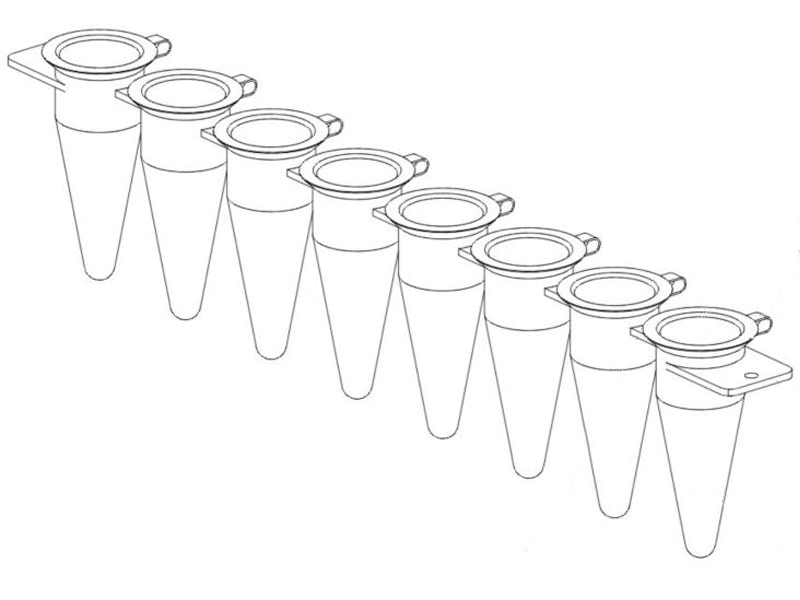 |
| 8-Tube Strips / 8-well strip / Strip of 8 tubes / Strip of 8 PCR tubes / 8-connected tubes |
2. Fundamentals: 8-Tube Strips and Their Diverse Applications
Material Science and Optimized Design
8-tube strips are predominantly manufactured from high-purity polypropylene (PP). This material is chosen for its exceptional inertness, which minimizes sample and reagent adsorption, and its excellent chemical resistance, ensuring compatibility with a wide range of laboratory substances.
The thin and uniform wall thickness is a critical design feature of 8-tube strips. This design optimizes heat transfer during thermal cycling, a core component of PCR and qPCR, thereby reducing cycle times and ensuring consistent reaction kinetics. The thinness of the tube walls is not a mere manufacturing detail but a crucial engineering choice that directly impacts the speed and efficiency of thermal cycling. PCR relies on rapid and precise temperature changes. The thin-wall design minimizes thermal resistance between the thermal cycler block and the sample , allowing the sample to reach target temperatures faster and more consistently, which in turn reduces overall cycling time and improves the efficiency and reproducibility of PCR reactions. This illustrates how a seemingly simple “thin wall” is, in fact, a complex material engineering decision that directly enables “fast PCR” and ensures the scientific integrity of temperature-sensitive assays.
Common tube volumes include 0.1 mL and 0.2 mL. Low-profile designs are often preferred as they reduce headspace above the reaction, further minimizing evaporation and enhancing thermal conduction. For real-time PCR (qPCR) applications, white or optically clear tubes are essential. White tubes enhance fluorescence signal intensity by reflecting light more effectively, while clear tubes allow for direct visual inspection and optical measurements.
To maintain sample integrity and prevent experimental artifacts, these consumables are rigorously certified to be free of DNase, RNase, human genomic DNA, endotoxins, pyrogens, and PCR inhibitors. This certification of being “free of DNase, RNase, human genomic DNA, etc.” is not just a quality mark but a fundamental requirement for data integrity and reproducibility in sensitive molecular biology applications. PCR and other molecular biology techniques are extremely sensitive to even trace contaminants, such as nucleic acids or degrading enzymes. If consumables contain these contaminants, it can lead to false positive results (e.g., amplification of contaminating human DNA) or sample degradation (e.g., RNase destroying RNA templates), rendering experimental data unreliable or unusable. Therefore, manufacturers rigorously test and certify their products to ensure they are free from these substances. This strict purity requirement underscores how consumable quality directly impacts the validity and trustworthiness of scientific research, making it a critical consideration for laboratories and a key differentiator for manufacturers.
Applications Beyond PCR
While 8-tube strips are primarily associated with PCR and qPCR , they are also versatile tools in various molecular biology applications. These include Next-Generation Sequencing (NGS) library preparation, enzyme digestion reactions, general sample incubation, and short-to-long-term sample storage. Their design allows for integration into standard 96-well plate formats via dedicated adapters, simplifying handling and enhancing compatibility with automated liquid handling systems.
Advantages of 8-Tube Strips
8-tube strips offer a flexible solution for experiments that do not require the full capacity of a 96-well plate, allowing users to utilize only the necessary number of tubes and avoid wasting entire plates. Their design ensures broad compatibility with most mainstream thermal cyclers and automated liquid handling systems, including multichannel pipettes. Compared to individual tubes, 8-tube strips simplify handling, especially when setting up multiple reactions simultaneously, reducing setup time and minimizing potential errors.
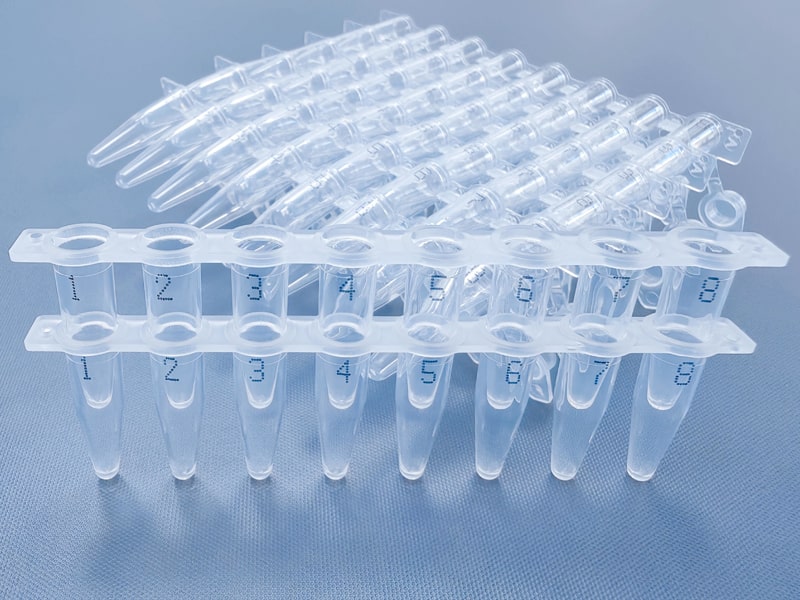
3. Precision Operations: Advanced Filling Technologies for 8-Tube Strips
Manual vs. Automated Dispensing
Traditional manual pipetting, while offering flexibility for small-scale experiments, has inherent drawbacks including susceptibility to human error, volumetric inconsistency, and labor intensiveness in high-throughput applications. Automated liquid handling systems are designed to overcome these limitations, providing superior precision, accuracy, speed, and reproducibility, which are crucial for reliable scientific outcomes.
Automated Liquid Handling Technologies
Unveiling Pump Systems:
● Syringe Pumps: Known for their high-precision metering, especially for very small volumes (e.g., microliters). They exhibit minimal fluctuations in flow rate, making them ideal for accurate dispensing of single reagents. However, the fluid directly contacts the syringe components, requiring meticulous cleaning to prevent contamination.
● Peristaltic Pumps: A type of positive displacement pump that moves fluid by compressing a flexible tube with rollers, where the fluid does not directly contact the pump’s internal components. This reduces contamination risk, making them suitable for handling viscous, abrasive, or chemically reactive liquids, as well as larger volumes. They offer fast filling, but their precision may be slightly lower than syringe pumps at very high flow rates.
● Positive Displacement Pipettes: Specifically designed for contamination-free pipetting, particularly for nucleic acid manipulations. They eliminate aerosol formation, a common source of cross-contamination, by directly displacing the liquid.
Accuracy and Reproducibility:
The performance of liquid handling equipment is evaluated by two key metrics: precision and accuracy.
● Precision measures the degree of variation between individual dispensed volumes within a single dispensing run, often expressed as the coefficient of variation (CV). A low CV indicates high reproducibility.
● Accuracy describes the deviation of the actual dispensed volume from the target volume.
High precision (low CV) is critical for quantitative assays like qPCR, where even minor volumetric deviations can significantly impact results.
The emphasis on “low CV” (Coefficient of Variation) in automated liquid handling is not merely a technical specification but a direct measure of experimental reproducibility and data reliability. A high CV indicates significant variability in dispensed volumes across different wells or batches. In sensitive assays like PCR/qPCR, even slight volumetric inconsistencies can alter reagent concentrations, reaction kinetics, and ultimately lead to unreliable, irreproducible, or invalid experimental data. This directly translates to wasted reagents and time. Therefore, a low CV is paramount as it directly ensures the validity and reproducibility of scientific results, which is the foundation of any reliable research or diagnostic output.
Table 1: Comparison of Automated Liquid Dispensing Pumps for 8-Tube Strips
| Feature/Pump Type | Syringe Pump | Peristaltic Pump | Positive Displacement Pipette |
| Dosing Accuracy | High accuracy, even for small volumes | Precise dosing, occasionally requires calibration | Excellent, eliminates aerosols |
| Flow Range | Very small, controlled volumes | Medium to large volumes, fast filling | Microliter range (1 µl – 20 µl) |
| Fluid Contact | Fluid directly contacts syringe components | Fluid only contacts flexible hose/tubing | Direct fluid displacement, no aerosols |
| Suitable Liquids | Clear, non-particulate liquids | Viscous, abrasive, or chemically reactive fluids; liquids with particles/slurries | Sensitive biological fluids, nucleic acids |
| Contamination Risk | Susceptible to contamination if not maintained | Lower risk, fluid does not contact pump components | Virtually eliminates aerosol-induced cross-contamination |
| Maintenance | More complex and expensive | Relatively simple and cost-effective | Maintenance-free |
| Typical Applications | Drug infusion, lab experiments, chromatography, precise reagent dispensing | Food processing, chemical dosing, water treatment, bulk fluid transfer | PCR setup, nucleic acid amplification |
In automated filling, the choice between syringe and peristaltic pumps is a critical engineering decision that depends on the volume, viscosity, and sterility requirements of the liquid being dispensed, directly impacting the throughput and precision of the filling process. Syringe pumps excel at precise dispensing of small volumes, but the fluid directly contacts the pump’s components. This means they are ideal for sensitive, particle-free reagents requiring extreme accuracy, but necessitate rigorous cleaning to avoid contamination. In contrast, peristaltic pumps can handle larger volumes, viscous, or particulate-containing liquids, and the fluid does not directly contact the pump’s internal components. This reduces contamination risk and simplifies maintenance , making them suitable for bulk reagent dispensing or less sensitive liquids, albeit with potentially slightly lower precision. Thus, the specific characteristics of the liquid (volume, viscosity, particulate content, sterility needs) dictate which pump technology is optimal, highlighting a fundamental trade-off between ultra-precision/sterility and high-throughput/versatility. This decision directly influences the efficiency and reliability of the filling process.
Contamination Control and Cleanroom Standards
Maintaining a sterile environment is paramount in laboratory automation. Automated systems employ rigorous cleaning protocols (for fixed pipette tips) or utilize disposable pipette tips to prevent cross-contamination. Careful planning of pipetting methods (e.g., avoiding tip contact with well contents during sequential transfers) and tip ejection methods is necessary to prevent droplet formation and reagent splatter.
The manufacturing of PCR plastics and automated liquid handling equipment often occurs in highly controlled cleanroom environments, classified according to ISO standards (e.g., ISO Class 5 or 7). These cleanrooms utilize HEPA (High-Efficiency Particulate Air) or ULPA filters and maintain controlled airflow (laminar or turbulent) and pressure differentials to minimize airborne particles and microorganisms, thereby ensuring product purity and preventing contamination.
The integration of “auto-priming” and “self-draining” features in modern dispensers signals a move towards reduced manual intervention and enhanced contamination control in automated liquid handling, thereby improving overall workflow efficiency. Newer automated liquid dispensers feature capabilities like automatic priming and self-draining prime troughs. Manual priming and draining are often time-consuming, can introduce air bubbles, and pose a contamination risk if not performed perfectly. These automated functions streamline the workflow, ensure consistent nozzle performance , and significantly reduce the need for operator intervention in these critical steps. This indicates a progression in laboratory automation towards smarter, more autonomous systems that not only perform tasks faster but also fundamentally reduce human-related variability and contamination risks, leading to improved overall operational efficiency and sample integrity.
4. Secure Sealing: Protecting Samples with Cutting-Edge Technology
The Imperative of Sealing
Proper sealing is crucial for protecting samples in 8-tube strips. It effectively prevents evaporation, which can drastically alter sample concentrations and reaction efficiencies, leading to inaccurate results. Beyond evaporation prevention, effective sealing also guards against well-to-well cross-contamination and protects samples from external contaminants during thermal cycling, short-term handling, and long-term storage, including cryogenic conditions.
Diverse Sealing Solutions
● Cap Strips:
○ Commonly available as 8-cap strips.
○ Caps can be attached to the tube strip or supplied separately. Attached caps allow individual tubes to be opened and closed, which is beneficial for reducing cross-contamination risk when only specific wells need to be accessed.
○ Domed Caps: Provide extra sealing pressure, especially when used with thermal cyclers equipped with heated lids, ensuring a tight seal and minimizing condensation.
○ Flat, Optically Clear Caps: Essential for real-time PCR (qPCR) applications, as their flat, transparent surface allows for precise fluorescence measurements from above.
○ Capping tools are often recommended to ensure secure and consistent cap application.
● Advanced Adhesive Films:
○ These films are coated with an adhesive and applied to the top surface of the tube strips. They are suitable for various applications and offer different properties based on their material composition.
○ Polyester Films: Known for their excellent thermal stability and chemical resistance, making them suitable for PCR/qPCR and thermal cycling. They are transparent, allowing visual inspection and optical readings.
○ Polypropylene Films: Offer high flexibility, conforming easily to uneven surfaces, and are readily pierceable by pipette tips or robotic probes. Compatible with a wide range of chemicals and suitable for cryogenic storage.
○ Aluminum Foil Films: Provide excellent heat resistance and act as a strong barrier against moisture, gas, and light. Ideal for light-sensitive samples and long-term storage, including cryogenic conditions. They are also pierceable for sample access.
○ Silicone Films: Unique for their resealability, allowing multiple accesses to wells without compromising the seal. Their flexibility and biocompatibility make them suitable for cell culture applications requiring gas exchange.
○ Applicator tools are typically required to ensure firm contact with well rims and strong adhesive bonding.
● Heat Sealing Technology:
○ Heat sealing involves melting the surface of a sealing film or foil to the plate rims, creating a particularly tight and durable seal. This method excels in long-term storage and provides the most effective barrier against evaporation.
○ The process relies on precise control of three interrelated elements: heat (temperature), pressure, and dwell time.
● ○ Higher pressure can allow for lower heat and shorter dwell times, and vice versa.
● ○ The film must be in a relaxed state when cooling to prevent gaps and pinholes.
● ○ Notably, contaminants (e.g., powders, blood, fats) can interfere with the heat sealing process, requiring careful attention to cleanliness.
The interplay of “heat, pressure, and dwell time” in heat sealing is not merely a set of parameters but a delicate balance that directly determines the integrity and longevity of the seal. If mismanaged, it can lead to critical failures like evaporation or contamination. Heat melts the film, pressure presses the molten film onto the tube edges, and dwell time allows the melted material to cool and solidify (crystallize), forming a strong bond. If the temperature is too low, the film won’t melt sufficiently to form a strong bond. If too high, the film might degrade or deform the tubes. Insufficient pressure leads to weak seals. Too short a dwell time results in brittle seals prone to pinholes or tearing. Therefore, achieving a robust, leak-proof, and durable seal is an optimization challenge where these parameters must be precisely controlled and adapted to the specific material properties of both the sealing film and the tubes. This directly impacts sample integrity and long-term storage capabilities.
● Automated Sealing Machines:
○ Modern laboratories increasingly rely on automated sealing machines for enhanced efficiency and consistency. These machines are designed for precision and versatility across various microplate and tube formats.
○ They can handle different types of films (self-adhesive, heat-sealable) and are crucial for rapid and efficient sealing tasks to prevent sample loss, cross-contamination, and leakage.
○ Xuebapack’s Innovative Solution: The “Fully automatic eight-tube linear film sealing and cutting machine” is an exemplary piece of cutting-edge automation in this domain. This filling and sealing machine is specifically designed for high-efficiency, precise sealing, and integrated cutting of 8-tube strips. Its linear operational mechanism ensures a continuous, smooth workflow, combining speed with accuracy for industrial-scale packaging.
The varied properties and applications of sealing film materials (polyester for optical clarity, aluminum foil for light protection/storage, silicone for resealability) demonstrate that no single sealing solution is universally optimal. The choice of sealing method is a critical decision that must align with specific experimental requirements (e.g., qPCR vs. long-term cryogenic storage). Different sealing film materials possess distinct properties. Different laboratory applications have unique needs: qPCR requires optical clarity , long-term storage at -80°C demands robust, moisture-proof seals , and cell culture might necessitate gas exchange. Using an unsuitable sealing film could compromise the experiment (e.g., non-optical film for qPCR, or non-cryo-resistant film for long-term storage). This highlights that selecting the correct sealing solution is a critical decision point for laboratory professionals. Manufacturers must offer a diverse portfolio, and users must possess the expertise to choose the optimal film based on their specific assay conditions, sample types, and storage requirements.
SFXB(Xuebapack)’s “Fully automatic eight-tube linear film sealing and cutting machine” directly addresses the need for high-throughput, precise, and integrated sealing of 8-tube strips, positioning it as a comprehensive automation solution for modern laboratories. Its linear design implies continuous, efficient processing capabilities. As laboratories scale up, manual or semi-automated sealing becomes a bottleneck, limiting throughput and introducing variability. Xuebapack’s machine is “fully automatic” and “linear,” implying continuous, high-speed operation. It integrates sealing and cutting functions, streamlining the post-filling workflow. This automation directly translates to significantly increased throughput, reduced labor costs, enhanced consistency, and minimized human error. By offering such an advanced, specialized machine, Xuebapack positions itself as a leader in providing precise and high-throughput solutions for the modern molecular biology and diagnostics industry, demonstrating its experience and expertise.
Table 2: Properties and Applications of 8-Tube Strip Sealing Film Materials
| Material Type | Key Properties | Ideal Applications |
| Polyester | Excellent thermal stability, high chemical resistance, transparent, good puncture resistance | PCR, qPCR (fluorescence optical clarity), thermal cycling, general assay applications |
| Polypropylene | High flexibility, easily pierceable, good chemical resistance, low-temperature resistant | ELISA assays, cryogenic storage, applications requiring repeated piercing |
| Aluminum Foil | High heat resistance, excellent moisture/gas barrier, opaque (light protection), pierceable | Long-term storage (especially cryogenic), light-sensitive samples, high-temperature applications (autoclaving) |
| Silicone | Excellent resealability (multiple access), high flexibility, biocompatible, allows gas exchange | High-throughput screening (repeated access), cell culture (gas permeability) |
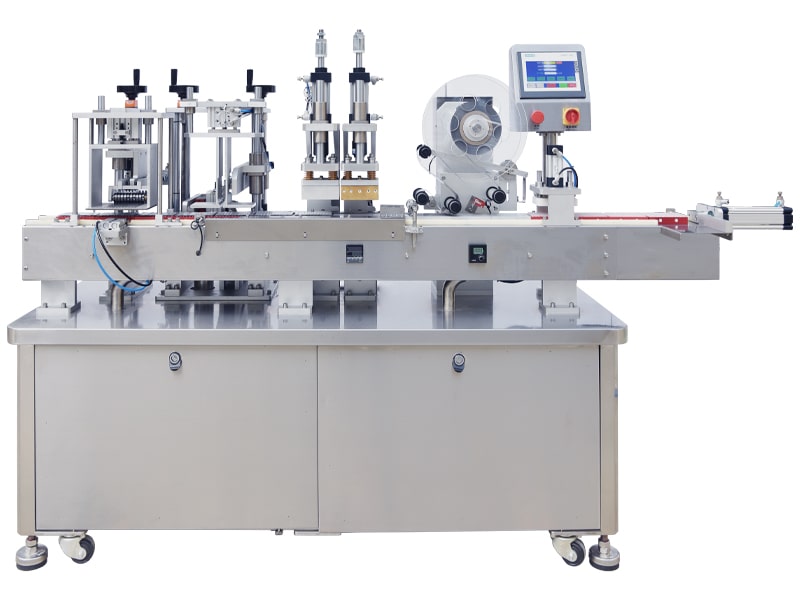 |
| Fully automatic eight-tube linear film sealing and cutting machine |
5. Ensuring Reliability: Rigorous Quality Control for Filled and Sealed Tube Strips
Integrity Testing of Sealed Tubes
● Leak Tightness Test: A fundamental test where liquid (e.g., ink or water) is filled into the tubes, sealed, and then immersed in water. No leakage after a specified time (e.g., 30 minutes) confirms the seal’s integrity.
● Centrifugal Airtightness: Tubes containing liquid are subjected to high centrifugal forces (e.g., 1000 rpm for 30 minutes). This test verifies that the tube caps do not collapse and no liquid leaks, ensuring stability under mechanical stress.
● Thermal Airtightness: Water-filled tubes are weighed, subjected to a typical PCR program (in a thermal cycler), and then re-weighed. No significant weight loss (evaporation) and no tube deformation confirm thermal stability and sealing efficiency at high temperatures.
● Cold Airtightness: Water-filled tubes are stored at low temperatures (e.g., -20°C for 24 hours). This test checks for tube deformation, cap collapse, or liquid leakage, which is crucial for samples requiring long-term cryogenic storage.
The “thermal airtightness” and “evaporation rate” tests are directly linked to the reliability of PCR/qPCR results. High evaporation leads to concentration changes, affecting enzyme activity, and ultimately resulting in inaccurate or irreproducible data. PCR/qPCR reactions are highly sensitive to the precise concentrations of reagents. Evaporation, especially at the elevated temperatures of thermal cycling , causes the solvent (water) to escape, thereby increasing the concentration of the remaining solutes (DNA, enzymes, primers). This change in concentration can lead to suboptimal reaction kinetics, reduced enzyme activity, and ultimately, inaccurate or inconsistent amplification results. For quantitative assays like qPCR, this directly compromises the ability to accurately measure target DNA/RNA. Therefore, successful performance in thermal airtightness and low evaporation rate in quality control tests directly translates to the scientific validity and reproducibility of molecular assays performed in these tubes.
Evaporation Rate Analysis
Minimizing evaporation is critical for sensitive applications like PCR/qPCR, as even minute sample loss can alter reagent concentrations, affecting reaction efficiency and data accuracy. Evaporation rate is typically quantified gravimetrically (weighing tubes before and after exposure to specific conditions). Manufacturers aim for less than 3% evaporation during thermal cycling to ensure reliable experimental data. Factors influencing evaporation include temperature, gas flow rate, solvent viscosity, and the exposed surface area of the liquid.
Purity Assurance
Beyond physical integrity, the chemical and biological purity of 8-tube strips is paramount. Consumables are certified free of DNA, RNase, DNase, human genomic DNA, endotoxins, and PCR inhibitors.
● Contaminant Detection: Involves using negative pure water as a template for a PCR reaction; no amplification confirms the product is free of contaminating DNA/RNA.
● Inhibitory Substance Detection: A weak positive control sample is amplified in the tubes; if amplification is not inhibited, it indicates the absence of PCR inhibitors.
● Blank Fluorescence Permeability: For qPCR, empty tubes are checked for non-specific fluorescent signals to ensure they do not interfere with optical measurements.
The comprehensive suite of quality control tests (leak tightness, centrifugal, thermal, cold airtightness, contaminant detection, inhibitor detection, fluorescence detection) demonstrates that product quality in this field is multifaceted and non-negotiable. It’s not just about filling and sealing, but about ensuring the entire consumable performs flawlessly under various demanding laboratory conditions. Laboratory samples and reactions are subjected to various physical and chemical stresses (e.g., centrifugation, storage or cycling at extreme temperatures, exposure to different reagents). A product might pass one test (e.g., room temperature leak test) but fail another (e.g., cold airtightness test ), rendering it unsuitable for certain applications. A single failure at any point can compromise an entire experiment, leading to sample loss, contamination, or inaccurate data. This comprehensive quality control approach reflects the high stakes in molecular biology and diagnostics. It demonstrates a manufacturer’s commitment to providing consumables that ensure sample integrity and data reliability across a wide range of demanding laboratory environments, thereby building deep trust with users.
Table 3: Key Quality Control Tests for Sealed 8-Tube Strips
| Test Type | Purpose/Methodology | Significance |
| Leak Tightness | Fill liquid, seal, immerse in water; check for leakage | Prevents sample loss and cross-contamination during handling and storage. |
| Centrifugal Airtightness | Fill with water, centrifuge at specified force; check for cap collapse or leakage | Ensures tube integrity and sample retention under mechanical stress, common in lab workflows. |
| Thermal Airtightness | Fill with water, weigh, run PCR program, re-weigh; check for deformation/weight loss | Evaluates sealing efficiency and evaporation prevention under thermal cycling conditions, critical for PCR/qPCR accuracy. |
| Cold Airtightness | Fill with water, store at -20°C; check for deformation or leakage | Guarantees integrity and sample retention during long-term cryogenic storage. |
| Contaminant Detection | Use negative pure water as PCR template; no amplification | Ensures product is free of contaminating DNA/RNA, preventing false positives in sensitive assays. |
| Inhibitory Substance Detection | Amplify weak positive control; no amplification inhibition | Verifies absence of substances that could interfere with enzymatic reactions, ensuring accurate results. |
| Blank Fluorescence Permeability | Run PCR program with empty tubes; check for non-specific fluorescence signals | Validates optical clarity for qPCR, ensuring precise fluorescence measurements without background interference. |
| Evaporation Rate Analysis | Gravimetric measurement (weighing before and after conditions); quantifies sample loss | Directly assesses sample integrity and concentration stability, crucial for reaction efficiency and data reliability. |
6. Automation Frontier: Future Trends in 8-Tube Strip Handling
Integration with Robotics and AI
The future of 8-tube strip handling lies in increasingly sophisticated integration with robotics and artificial intelligence. Automated liquid handling equipment is now part of larger robotic platforms that manage entire workflows, from initial sample loading and preparation to processing, analysis, and final aspiration. This includes automated storage, precise filling, labeling, and even complex sample manipulation, all coordinated by intelligent software.
The shift towards “full workflow automation” with robotic integration signifies a fundamental transformation in laboratory operations, moving from individual automated steps to entirely hands-off processes. This will radically change laboratory operations, further reducing labor costs and human error. Historically, automation often focused on discrete tasks (e.g., just filling or just sealing). The emerging trend is for modern systems to integrate these disparate modules with robotic arms and intelligent software to create seamless, end-to-end workflows. This means samples can move from initial loading through all processing steps without human intervention. This holistic automation dramatically reduces manual labor, minimizes opportunities for human error (e.g., misplacing tubes, inconsistent handling), and significantly boosts throughput. This represents the next major leap in laboratory efficiency and reproducibility, enabling laboratories to process exponentially more samples and accelerate scientific discovery.
Enhancing Throughput and Efficiency
Robotic systems are capable of simultaneously piercing seals and performing high-precision aspirations, dramatically increasing throughput compared to manual or semi-automated processes. The goal is to achieve unparalleled speed and consistency, meeting the demands of high-volume research and diagnostic laboratories.
Evolution of Lab Automation
The trend is towards more compact, versatile, and user-friendly automation systems that bridge the gap between traditional manual pipetting and large, complex, and often costly laboratory equipment. Future innovations will focus on greater autonomy, less human intervention, and seamless data integration with Laboratory Information Management Systems (LIMS) for comprehensive sample tracking and data integrity.
The mention of “data management” and “LIMS integration” in automated liquid handling systems indicates that automation is not just about physical processing but also about digital transformation and data integrity. As throughput increases, manually managing the vast amounts of data generated (e.g., sample IDs, volumes, processing parameters, results) becomes overwhelming. Manual data entry is also prone to errors. Automated data logging and integration with LIMS ensure that every step of the process is meticulously recorded, samples are accurately tracked, and data is consistent and accessible. This digital integration is crucial for regulatory compliance, audit trails, and ensuring the long-term integrity and traceability of scientific data. It underscores that modern laboratory automation is a holistic solution that addresses both physical sample handling and the critical need for robust data governance.
7. Conclusion: Empowering Scientific Discovery Through Automated Excellence
The precise filling and reliable sealing of 8-tube strips are not merely technical steps; they are fundamental pillars ensuring sample integrity, experimental success, and data reliability across diverse scientific fields, from basic research to advanced diagnostics.
Automated solutions have revolutionized this critical process, offering unparalleled precision, efficiency, and contamination control, effectively addressing the inherent limitations and challenges of manual methods. Manufacturers like Xuebapack, with our commitment to innovation, exemplified by their “Fully automatic eight-tube linear film sealing and cutting machine” , are at the forefront of this revolution. By providing high-performance, reliable packaging and filling machinery, they empower laboratories worldwide to achieve higher throughput, maintain stringent quality standards, and ultimately accelerate scientific discovery. Their expertise and advanced solutions are vital for the continued progress in life sciences and beyond.
Frequently Asked Questions (FAQ) about 8-Tube Strips filling machinery
Here are 10 frequently asked questions based on the article’s content:
1. What are 8-tube strips and what are their primary applications in laboratories?
8-tube strips are consumables, typically made of high-purity polypropylene, containing eight interconnected tubes (often 0.1 mL or 0.2 mL). They are primarily used in molecular biology applications like Polymerase Chain Reaction (PCR) and quantitative PCR (qPCR), but also for Next-Generation Sequencing (NGS) library preparation, enzyme digestion, sample incubation, and short-to-long-term sample storage.
2. Why is proper sealing of 8-tube strips crucial for experimental integrity?
Proper sealing is essential to prevent evaporation, which can drastically alter sample concentrations and reaction efficiencies, leading to inaccurate results. It also prevents cross-contamination between wells and protects samples from external contaminants during thermal cycling, handling, and long-term storage, including cryogenic conditions.
3. What material are 8-tube strips typically made from, and what are its key advantages?
8-tube strips are predominantly manufactured from high-purity polypropylene (PP). This material is chosen for its exceptional inertness, which minimizes sample and reagent adsorption, and its excellent chemical resistance. The thin and uniform wall thickness of PP tubes optimizes heat transfer during thermal cycling, which is crucial for PCR and qPCR .
4. What are the main types of automated liquid handling pumps used for filling 8-tube strips?
The primary types of automated liquid handling pumps are syringe pumps and peristaltic pumps. Syringe pumps are known for high precision with small, clear volumes, while peristaltic pumps are suitable for larger, more viscous, or particulate-containing liquids, with the fluid only contacting the flexible tubing. Positive displacement pipettes are also used for contamination-free pipetting, especially for nucleic acids.
5. What are the different methods available for sealing 8-tube strips?
Common sealing methods include using cap strips (domed or flat/optically clear), advanced adhesive films (made from materials like polyester, polypropylene, aluminum foil, or silicone), and heat sealing technology. Each method offers distinct benefits regarding re-sealability, optical clarity, and barrier properties for various applications .
6. How does heat sealing technology work for 8-tube strips?
Heat sealing involves melting the surface of a sealing film or foil to the tube strip rims, creating a particularly tight and durable seal. This process relies on precise control of three interrelated elements: heat (temperature), pressure, and dwell time. For optimal results, the film must be in a relaxed state when cooling to prevent gaps and pinholes .
7. What quality control tests are performed on sealed 8-tube strips to ensure their reliability?
Key quality control tests include leak tightness tests (checking for liquid leakage), centrifugal airtightness (verifying stability under mechanical stress), thermal airtightness (assessing evaporation prevention at high temperatures), cold airtightness (ensuring integrity at low temperatures), contaminant detection (confirming absence of DNA/RNA), inhibitory substance detection (checking for PCR inhibitors), and blank fluorescence permeability (for qPCR optical clarity) .
8. Why is a low evaporation rate critical for PCR and qPCR applications using 8-tube strips?
A low evaporation rate is crucial because even minute sample loss can significantly alter reagent concentrations, affecting reaction efficiency and data accuracy in sensitive applications like PCR/qPCR. Manufacturers typically aim for less than 3% evaporation during thermal cycling to ensure reliable experimental data .
9. What are cleanroom standards, and why are they important for manufacturing laboratory consumables and equipment?
Cleanroom standards, such as ISO Class 5 or 7, classify environments based on the number of particles in a given volume of air. They are crucial for manufacturing 8-tube strips and automated equipment to ensure product purity and prevent contamination. These environments utilize HEPA (High-Efficiency Particulate Air) or ULPA filters and maintain controlled airflow and pressure differentials to minimize airborne particles and microorganisms .
10. How does automation, such as SFXB’s “Fully automatic eight-tube linear film sealing and cutting machine,” benefit the filling and sealing of 8-tube strips?
Automation significantly enhances efficiency, precision, and consistency, while minimizing human error and contamination risks. Machines like Xuebapack’s “Fully automatic eight-tube linear film sealing and cutting machine” provide high-throughput, accurate, and integrated sealing and cutting, streamlining workflows and accelerating scientific discovery by reducing manual labor and ensuring reliable results .
| References: | |
| 1. | Scalable, Smart, and Accessible: The Future of Lab Automation ——Retrieved from:News-Medical |
| 2. | Regional Insights into Thin Wall PCR Tube Market Growth ——Retrieved from:DataInsightsMarket |


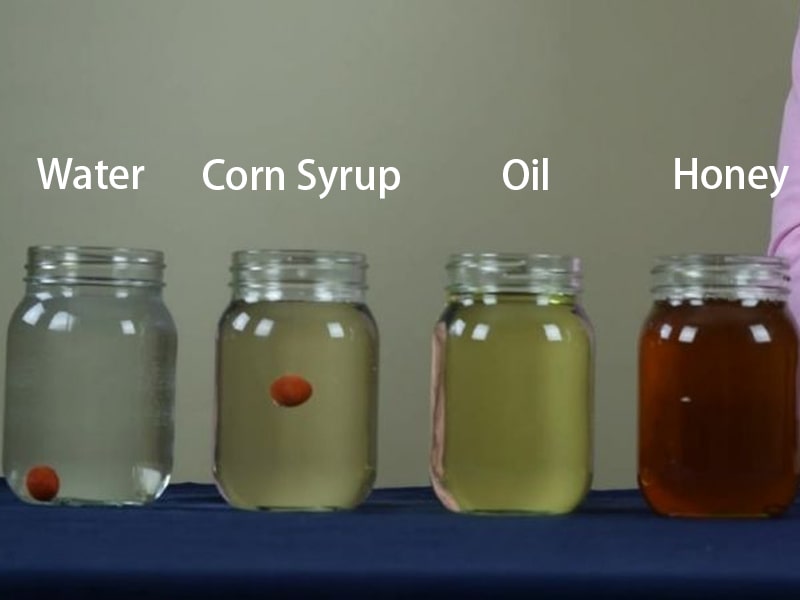

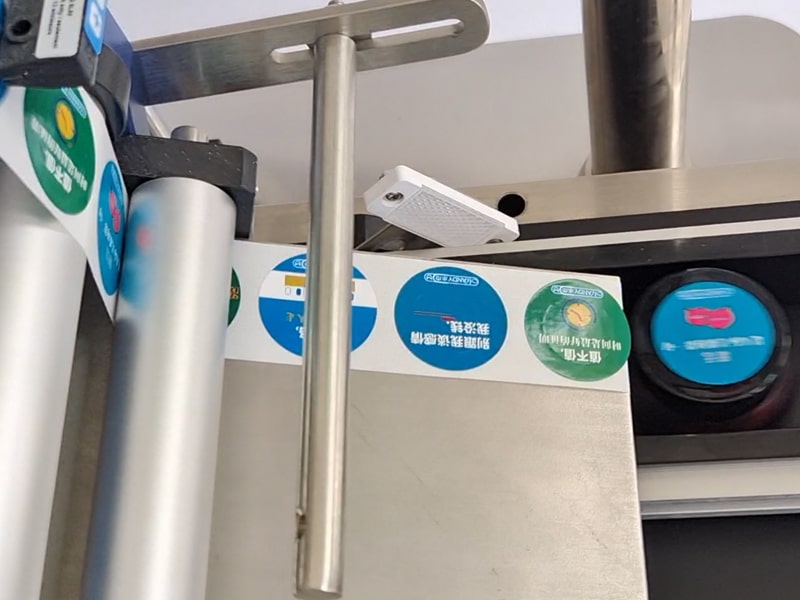

Comments